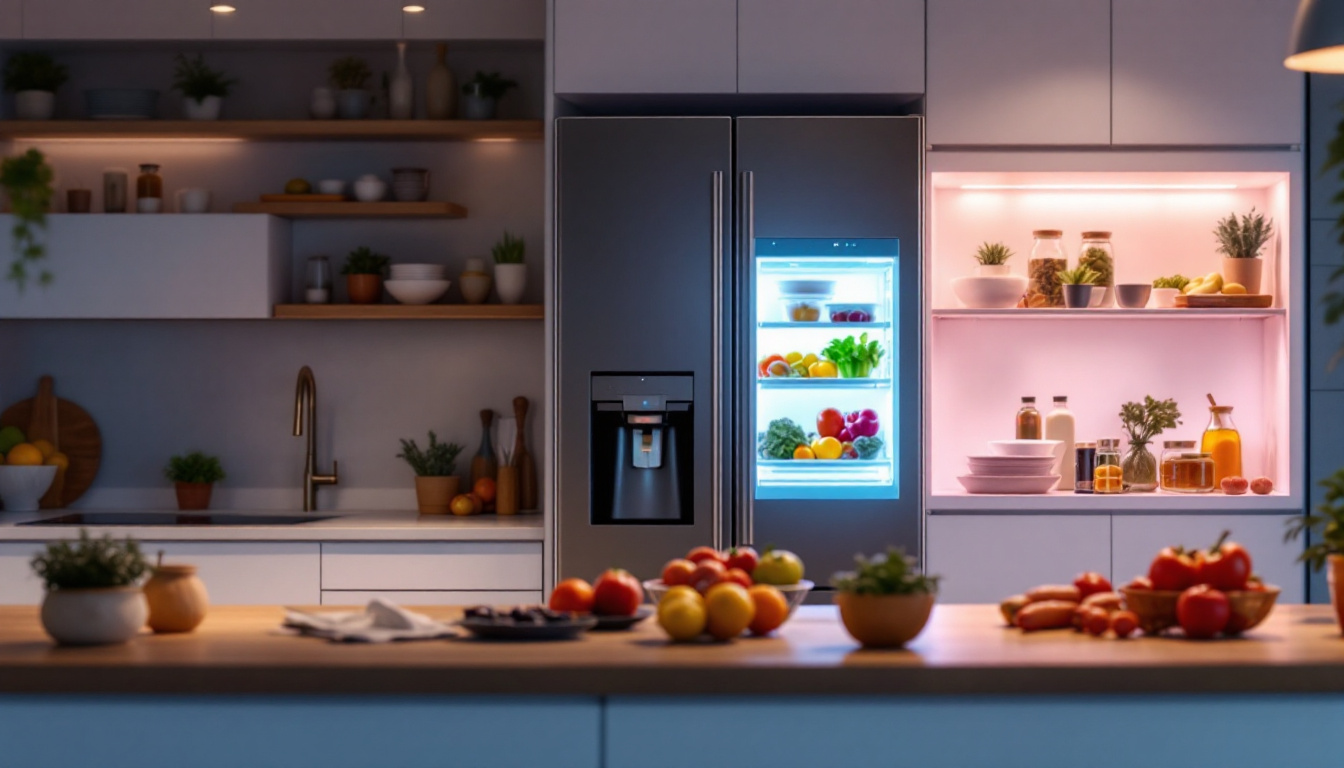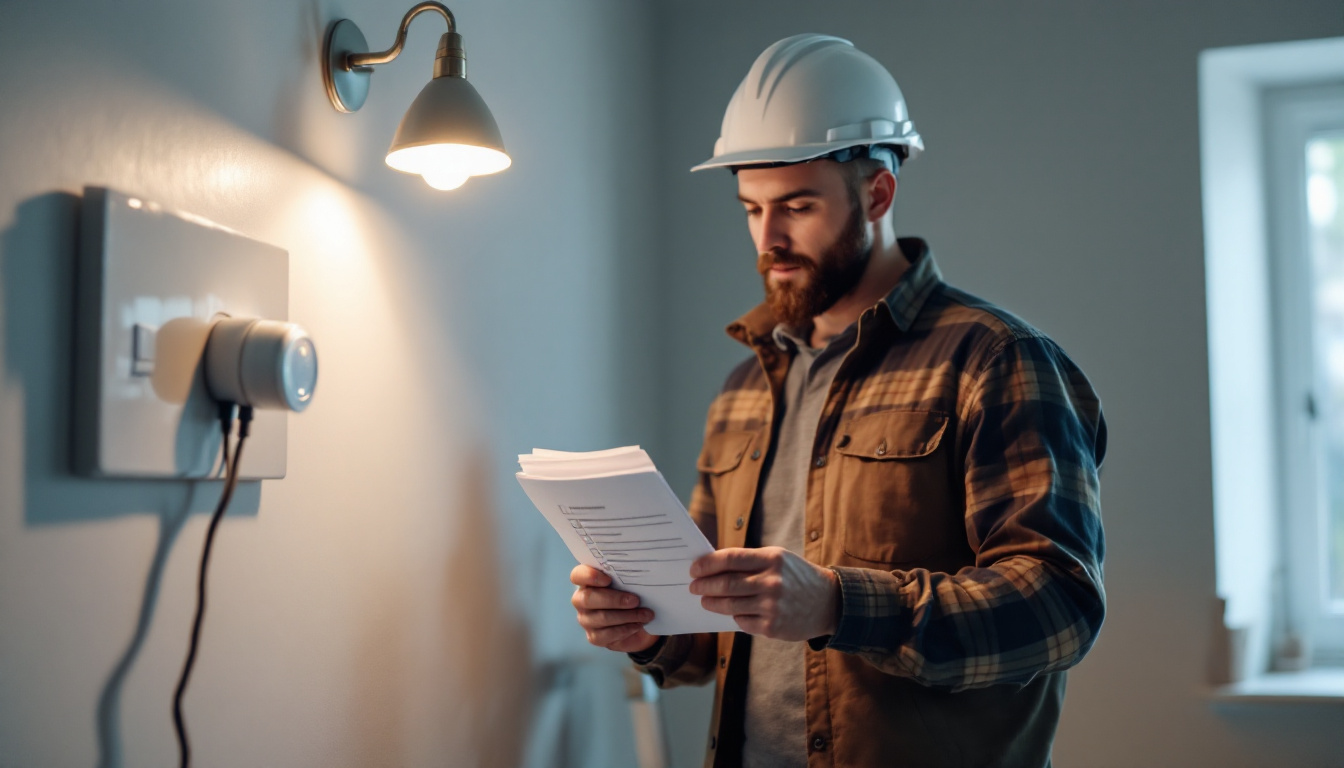
Lighting plays a crucial role in enhancing safety, security, and aesthetics in both residential and commercial spaces. Among the various lighting solutions available, lamps equipped with motion sensors have gained popularity due to their convenience and energy efficiency. However, lighting contractors often encounter challenges when installing and maintaining these systems. This article aims to provide insights on how lighting contractors can avoid common issues associated with motion sensor lamps.
Motion sensors are devices that detect movement within a specified area. They typically use technologies such as passive infrared (PIR), ultrasonic, or dual technology to sense motion. PIR sensors detect changes in infrared radiation, while ultrasonic sensors emit sound waves to identify movement. Dual technology combines both methods for increased reliability.
For lighting contractors, understanding these technologies is essential. Each type of sensor has its strengths and weaknesses, which can significantly impact the effectiveness of the lighting solution. For example, PIR sensors are generally more effective outdoors, while ultrasonic sensors may be better suited for indoor applications. Furthermore, the sensitivity settings of these sensors can often be adjusted, allowing for customization based on the environment. For instance, in areas with frequent animal movement, a contractor might lower the sensitivity of a PIR sensor to prevent false triggers, ensuring that the lighting system operates only when necessary.
Motion sensor lamps are widely used in various settings, including residential homes, commercial properties, and public spaces. In residential areas, they are often installed in driveways, gardens, and entryways to enhance security. In commercial settings, these lamps can illuminate hallways, stairwells, and parking lots, ensuring safety for employees and customers alike. Additionally, motion sensor lamps are increasingly being integrated into smart home systems, allowing homeowners to control lighting remotely and set schedules that align with their daily routines.
Understanding the specific application of motion sensor lamps helps contractors tailor their installations to meet the unique needs of each project. This knowledge can also aid in selecting the appropriate sensor technology and lamp type, ultimately leading to a more effective lighting solution. Moreover, the growing trend towards energy efficiency has led to the development of LED motion sensor lamps, which not only consume less power but also have a longer lifespan compared to traditional bulbs. This shift not only benefits the environment but also reduces maintenance costs for property owners, making motion sensor lamps an increasingly popular choice in both new constructions and retrofitting projects.
One of the most common issues with motion sensor lamps is false triggering. This can occur due to various factors, such as wind, passing vehicles, or even small animals. False triggers not only waste energy but can also lead to annoyance for homeowners or building occupants.
To mitigate this issue, contractors should consider the placement and sensitivity settings of the sensors. Installing sensors at an appropriate height and angle can help minimize the chances of false triggers. Additionally, many modern sensors come with adjustable sensitivity settings, allowing contractors to fine-tune the device to the specific environment. Some advanced models even feature smart technology that learns the typical patterns of movement in an area, further reducing the likelihood of false alarms. This adaptability can be particularly beneficial in residential areas where wildlife is common, ensuring that the lights activate only when necessary.
Another challenge is ensuring adequate coverage areas for motion sensor lamps. If a sensor is not positioned correctly, it may fail to detect movement in certain areas, leaving dark spots that compromise safety and security.
Contractors should conduct a thorough assessment of the area before installation. This includes identifying potential obstacles that could block the sensor’s line of sight and determining the optimal placement for maximum coverage. Utilizing tools like laser distance meters can help in accurately measuring distances and angles, ensuring that the sensors are installed in the most effective locations. Moreover, it is important to consider the height and orientation of the fixtures themselves; for instance, placing lights too high can diminish their effectiveness in illuminating lower areas where intruders might lurk. A comprehensive lighting plan that includes both motion sensors and fixed lighting can enhance overall visibility and security.
Many lighting contractors face challenges when integrating motion sensor lamps with existing lighting systems. Compatibility issues can arise, particularly when dealing with older systems or different brands of equipment. This can lead to functionality problems, such as lamps not responding to motion as intended.
To avoid these integration issues, contractors should familiarize themselves with the specifications of both the motion sensor lamps and the existing lighting systems. It may be necessary to upgrade certain components or choose compatible products to ensure seamless operation. Additionally, consulting with manufacturers can provide valuable insights into compatibility and integration solutions. It’s also worth noting that some modern systems offer app-based controls, allowing for real-time adjustments and monitoring. This can be particularly advantageous for commercial properties, where lighting needs may change throughout the day or in response to specific events. By leveraging technology, contractors can create more responsive and efficient lighting solutions that meet the dynamic needs of their clients.
A comprehensive site assessment is essential before installing motion sensor lamps. This process involves evaluating the specific lighting needs of the area, understanding the movement patterns of people or vehicles, and identifying potential obstacles that could interfere with sensor performance.
During the assessment, contractors should take detailed notes and measurements. This information will guide the selection of appropriate sensors and lamp types, ensuring that the installation meets the client’s requirements while minimizing potential issues.
Selecting the right motion sensor lamps is critical for a successful installation. Contractors should consider factors such as the type of sensor technology, the lamp’s brightness, and the expected lifespan. Additionally, energy efficiency ratings can influence the long-term cost-effectiveness of the lighting solution.
It is also advisable to choose products from reputable manufacturers known for their quality and reliability. Investing in high-quality equipment can reduce the likelihood of issues arising post-installation, leading to greater client satisfaction.
Proper wiring and connections are vital for the functionality of motion sensor lamps. Contractors should adhere to local electrical codes and regulations to ensure safety and compliance. Additionally, using high-quality wiring and connectors can prevent issues such as flickering lights or complete failures.
Before finalizing the installation, contractors should conduct thorough testing of the system. This includes checking the sensor’s responsiveness to motion and ensuring that the lamps operate as intended. Addressing any issues during the testing phase can save time and resources in the long run.
Routine inspections are essential for maintaining the performance of motion sensor lamps. Over time, dirt, dust, and debris can accumulate on the sensors, reducing their effectiveness. Regular cleaning and maintenance can help ensure that the sensors function optimally.
Contractors should establish a maintenance schedule for clients, providing guidance on how often inspections should occur. This proactive approach can help identify potential issues before they escalate, ensuring that the lighting system remains reliable and efficient.
Many modern motion sensor lamps come equipped with smart technology that may require periodic software or firmware updates. These updates can enhance functionality, improve energy efficiency, and address security vulnerabilities.
Contractors should stay informed about the latest updates for the products they install. Providing clients with information on how to perform these updates can empower them to maintain their systems effectively, leading to longer-lasting performance.
Educating clients about the operation and maintenance of motion sensor lamps is a crucial aspect of the installation process. Many clients may not be familiar with how motion sensors work or how to adjust their settings. Providing clear instructions and resources can help clients make the most of their lighting systems.
Contractors can also offer tips on how to minimize false triggers and optimize sensor performance. This education not only enhances client satisfaction but also reduces the likelihood of service calls for minor issues.
The field of motion sensor technology is continually evolving, with advancements aimed at improving performance and user experience. Newer sensors may incorporate artificial intelligence, allowing them to learn movement patterns and adjust their sensitivity accordingly.
Lighting contractors should stay abreast of these advancements to offer clients the latest solutions. By integrating cutting-edge technology into their installations, contractors can enhance the effectiveness of motion sensor lamps while providing added value to their services.
As sustainability becomes an increasingly important consideration in lighting design, motion sensor lamps are well-positioned to play a significant role. Energy-efficient models can help reduce electricity consumption, contributing to lower utility bills and a smaller carbon footprint.
Contractors should emphasize the benefits of energy-efficient motion sensor lamps to clients, highlighting the long-term savings and environmental impact. This focus on sustainability can also enhance a contractor’s reputation as a forward-thinking professional in the industry.
The rise of smart home technology has opened new avenues for motion sensor lighting. Many homeowners are now seeking systems that can integrate with their smart home devices, allowing for seamless control and automation.
Lighting contractors should familiarize themselves with smart home platforms and compatible motion sensor products. By offering integrated solutions, contractors can meet the growing demand for smart lighting systems, positioning themselves as leaders in the market.
Motion sensor lamps offer numerous benefits, but they also present unique challenges for lighting contractors. By understanding the technology, addressing common issues, and following best practices for installation and maintenance, contractors can provide effective lighting solutions that meet client needs.
As the industry continues to evolve, staying informed about advancements in sensor technology and sustainability trends will be crucial for success. By embracing these changes and educating clients, lighting contractors can enhance their services and ensure long-term satisfaction.
Ready to elevate your lighting projects with the latest in motion sensor technology? Look no further than LumenWholesale for all your lighting needs. Our extensive selection of spec-grade lighting products is designed to meet the highest industry standards, ensuring you deliver reliable and high-performance lighting solutions. With unbeatable wholesale prices and the convenience of free shipping on bulk orders, you can provide your clients with top-quality lighting without the extra costs. Don’t compromise on quality or value—choose LumenWholesale for the best in lighting solutions. Wholesale Lighting at the Best Value is just a click away.

Discover how smart timers for outdoor lights are revolutionizing the work of lighting contractors by enhancing efficiency and energy savings.

Discover the essential checklist for lighting contractors focusing on LED fridge lights.

Discover the essential checklist for lighting contractors with our comprehensive guide on timers for light switches.

Discover how ultra-thin flat panel LED lights are revolutionizing the lighting industry and giving contractors a competitive edge.